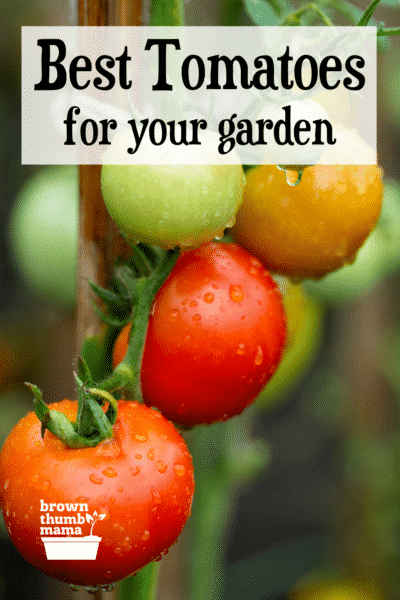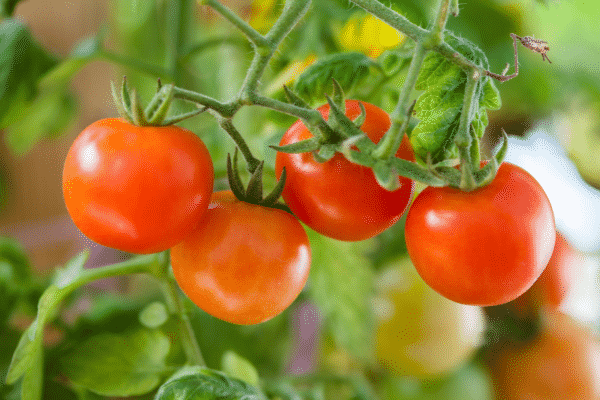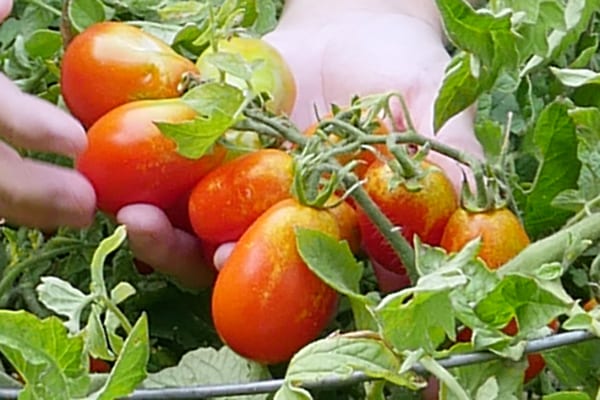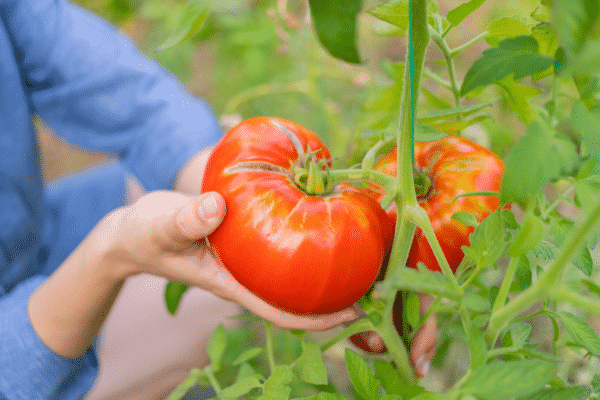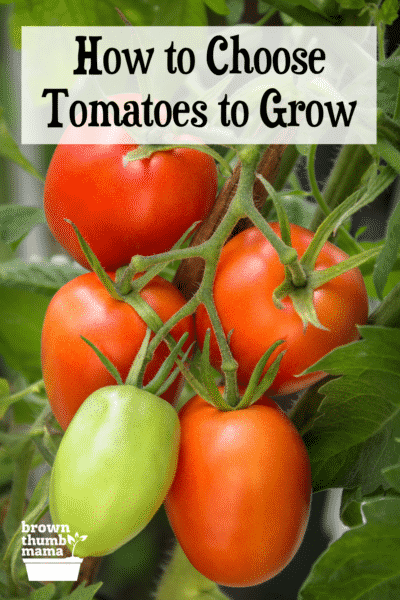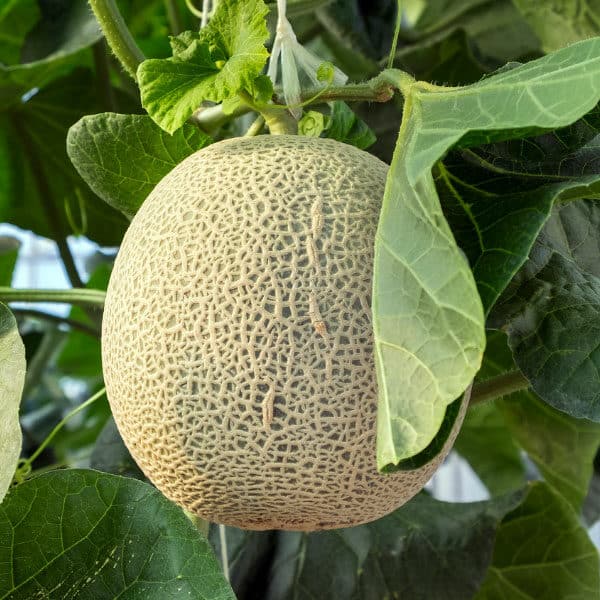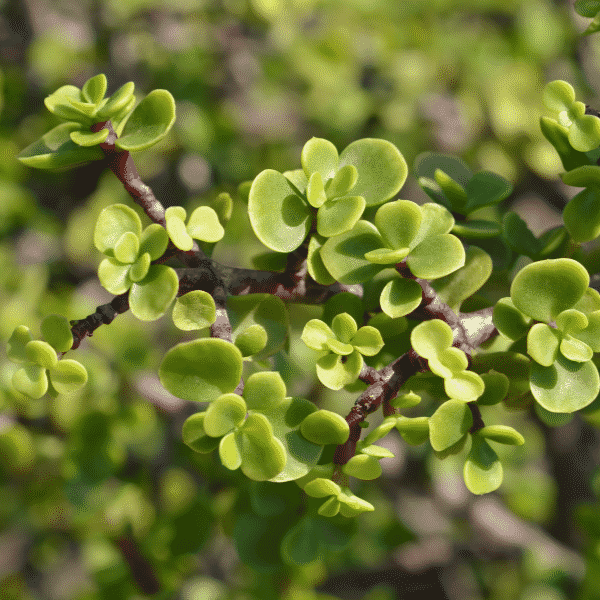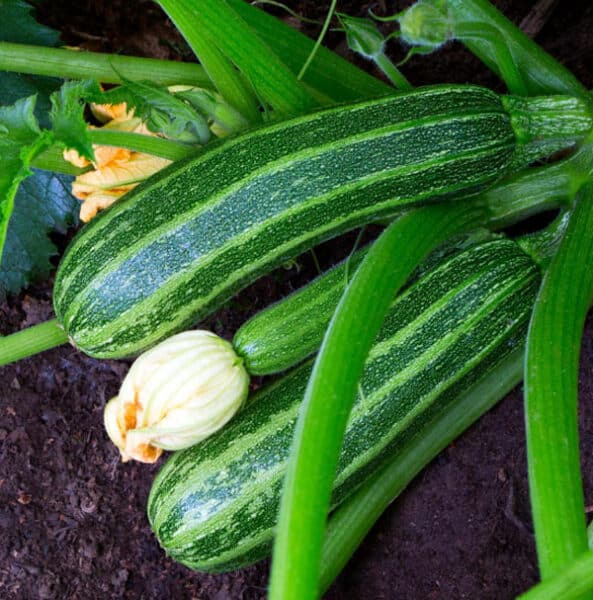This post may include affiliate links.
If you make a purchase, I'll earn a small fee at no extra cost to you.
Are you growing tomatoes in your garden? It’s important to choose the right type of tomato before planting. Learn the difference between determinate and indeterminate tomatoes, as well as which tomatoes are best for slicing, canning, or eating right off the vine.
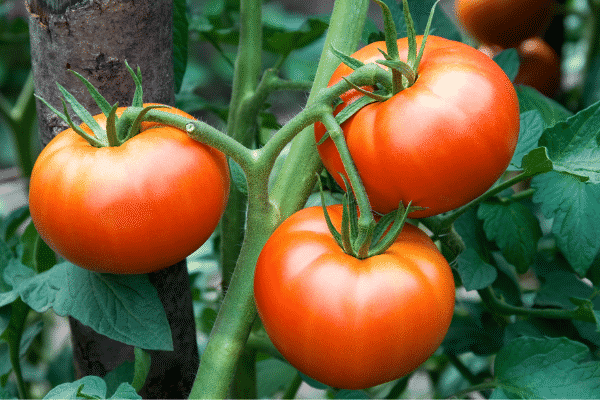
Tomatoes are the mainstay of any good vegetable garden, even though they’re technically a fruit. Knowing the different types of tomatoes can help you decide which varieties are the best ones for your garden. When you’re finished with this guide, you’ll know way more about tomatoes than the average person – and you’ll most likely develop some serious tomato cravings!
Determinate vs Indeterminate Tomato Plants
The first distinction to make—even more important than slicer vs. paste vs. cherry tomato—is determinate vs indeterminate. Surprised? This difference is key to understanding which tomatoes are best for different purposes.
Determinate Tomato Plants
Determinate tomatoes have “predetermined” growth limits. They have been selectively bred to only grow to about 3-4 feet tall, with fruit ripening at the end of their branches. Their size makes them ideal for a small garden where space is at a premium. Determinate tomato plants typically bear smaller fruit early in the growing season.
The other interesting thing about determinate tomatoes is they all ripen at the same time. This means you’ll be loaded with tons of ripe tomatoes all at once, even from a relatively small plant.
This is one reason determinate tomatoes are ideal for canning. When canning anything tomato-based, you need to use a lot of tomatoes at the same time. Determinate tomato plants have you covered. However, because they ripen all at once, you’ll go from tomato overload to zero tomatoes pretty quickly. If you want to harvest a couple of tomatoes every day or two, you’ll do better with indeterminate tomatoes.
Indeterminate Tomato Plants
Indeterminate tomato plants have “undetermined” growth. Basically, they can keep growing all season long – even up to 20 feet tall! Unlike compact, bushy determinate tomato plants, indeterminate tomatoes are tall with long, thick branches. Their fruit grows closer to the stems.
Indeterminate tomatoes also have a continuous harvest, meaning tomatoes will ripen successively over the entire growing season (but never a lot all at once). Because they ripen continuously, indeterminate tomatoes are great for daily use, like on sandwiches or in salads. But this also means you’ll never get a huge crop of tomatoes ready at the same time. Indeterminate tomato plants are pretty large, so they need to be supported with a tomato cage or tomato stakes.
Indeterminate tomatoes are much larger than determinate varieties, and will produce ripe tomatoes throughout the entire growing season until the first frost sets in.
How to Tell if Your Tomatoes are Determinate or Indeterminate
Of course, the plant tag or seed packet will tell you which is which. But if you’ve already planted your tomatoes and don’t know what type you have, it’s easy to tell them apart. Determinate tomato plants are short, compact, and bushy with fruit forming at the end of their branches. Indeterminate plants are tall with fruit forming along the branches.
Types of Tomatoes for Your Garden
Now it’s time to really dig in to the different types of tomatoes you can grow. Different tomato varieties can be used in completely different ways, and you should plant the types that correspond to how you’ll use them. Think salads vs canning vs sandwiches… these all need very different tomato varieties to achieve the best results. Here’s a rundown of the most common tomato types to grow and the best ways to use them in the kitchen.
Cherry and Grape Tomatoes
Cherry and grape tomatoes are pretty similar in size and shape. Their names accurately describe their size: these tomatoes are small like cherries and grapes. Cherry tomatoes are rounder, while grape tomatoes are more oval.
While red is the most common color for cherry and grape tomatoes, you can also find yellow, orange, and even dark purple cherry tomatoes. These are great for adding new colors and flavors to classic snacks and dishes.
Grape tomatoes have a more classic tomato texture and flavor, while cherry tomatoes are much sweeter with a crisp bite. They’re both delicious and can be used interchangeably in most recipes. Here are some great ways to use either grape or cherry tomatoes:
- Snack on them as is – these tomatoes taste delicious all by themselves
- Roast in the oven with salt, pepper, and garlic
- Whole grape/cherry tomatoes are great in salads (and pasta salads too!)
- Halve them and use to top homemade pizza
- Use in kabobs with your favorite dressing or dip (I recommend hummus)
- Add halves to scrambled eggs and omelets for a healthy breakfast
Both cherry and grape tomatoes can be determinate or indeterminate, so keep that in mind when choosing your tomato plants. Because these tomatoes work well for snacking and cooking, indeterminate plants are usually the best choice. Here are some of my favorites:
Cherry Falls: the classic red cherry tomato, in a compact plant that’s perfect for containers or even hanging baskets.
Indigo Rose: this eye-catching cherry tomato is purplish-brown on the outside and red on the inside, with sweet flavor.
Pandorino: an indeterminate grape tomato with delightfully balanced flavor.
Paste Tomatoes
The category of “paste tomatoes” is a catch-all term for Roma, plum, or sauce tomatoes. While all of these tomatoes have slightly different shapes and sizes, they share some important features that make them great for canning.
Paste tomatoes are typically elongated in shape. They’re thick and meaty with small seed sacks. They have a low-water content, which makes them less juicy but also ideal for making paste or sauce or tomato-based canning recipes. Because of their low water content, paste tomatoes boil down faster than other tomatoes, which can really help reduce cooking time. They’re also great for making sun-dried tomatoes (you can also dry them with a food dehydrator of course).
Most paste tomatoes are determinate varieties. Be prepared to harvest a large amount of tomatoes at once and then spend a few days canning, drying, and preserving them for long-term use.
I typically grow paste tomatoes, and can lots and lots of tomato sauce when everything comes ripe. My favorite varieties of paste tomatoes are:
San Marzano: these are one of the most popular varieties of paste tomato, and their fruit can be up to 5 inches long. They are one of the few indeterminate paste tomatoes.
Italian Roma: this is an heirloom variety, and it produces lots of oblong-shaped, meaty tomatoes all at once (determinate)
Supremo: another determinate variety, Supremo is disease-resistant and good for container growing.
Slicer Tomatoes
Slicer tomatoes are big and crisp and juicy, perfect for slicing for sandwiches and burgers. Slicer tomatoes are often divided into two main categories: heirloom and hybrid.
What are Heirloom Tomatoes?
Heirloom tomatoes come from seeds that have been passed down season to season. They’re always open-pollinated (which means they need to be pollinated the old-fashioned way by bees, birds, wind, etc.). These varieties have been carefully preserved over generations and tend to be incredibly flavorful.
What are Hybrid Tomatoes?
Hybrid tomatoes have been cross-pollinated by plant breeders to select specific qualities for the tomatoes. This often happens in nature, but breeders just use a more intentional process.
The main issue with hybrids is the fact that they’re bred for commercial farming and transport, not flavor. These tomatoes are more uniform in size and appearance, they have thick skin that’s resistant to cracking, and are often disease-resistant. These traits might be important in commercial farming, but not so much for backyard gardening. Hybrid tomatoes are often missing a lot of the unique features of heirloom tomatoes, like interesting shapes and colors.
I love the rich flavor of heirloom tomatoes and the fact that they’ve been preserved by generations of family farmers. Because of that, I’m sticking to my favorite heirloom slicing tomatoes that will really bring some flavor to your sandwiches. I also picked indeterminate varieties since you’ll typically want slicer tomatoes to be available fresh all season long.
- Brandywine: These tomatoes are truly an heirloom dating back to the 1880s. They’re large and juicy, and come in a variety of colors like red, pink, orange, and yellow.
- Black Krim: These tomatoes are particularly dark in color with a smoky, salty flavor. They’re a medium-sized tomato perfect for subs and burgers.
- Cherokee Purple: These get their name from the purplish-green color at their tops. This variety has a very sweet flavor, similar to cherry tomatoes.
- Beefsteak: Beefsteak tomatoes are your “classic” tomato: huge, round, and red. They’re one of the biggest tomato varieties, reaching up to two pounds in size!
- Mortgage Lifter: This pinkish tomato variety is large and juicy. Its rich, sweet taste makes it perfect for fresh salsa. This is the story behind the name: a tomato farmer was facing bankruptcy, and he selected a tomato that was so productive that he was able to sell the tomatoes to pay off the mortgage.
Which tomatoes are you growing? What new varieties will you try? Share your thoughts in the comments below!

